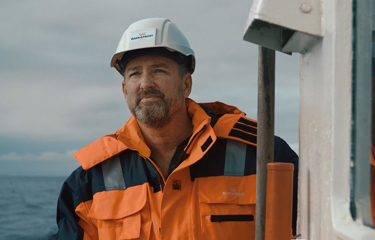Increased Q2 earnings for Bakkafrost despite value-added decline, lower harvest

Bakkafrost Group has posted total operating earnings before interest and taxes (EBIT) of DKK 587 million (USD 78.5 million, EUR 78.9 million) for the second quarter of 2022, up from DKK 407 million (USD 54.4 million, EUR 54.7 million) in the corresponding period of 2021.
The Faroe Islands-based Atlantic salmon farming group’s operating revenues increased to almost DKK 1.7 billion (USD 227.3 million, EUR 228.5 million) for Q2, and to DKK 3.3 billion (USD 441.3 million, EUR 443.7 million) for the first half of 2022. Its Q2 profit almost doubled year-over-year from Q2 2021’s DKK 428 million (USD 57.2 million, EUR 57.6 million) to DKK 845 million (USD 112.9 million, EUR 113.6 million), while its profit for H1 2022 climbed to more than DKK 1.2 billion (USD 160.4 million, EUR 161.3 million).
Bakkafrost harvested 19,700 metric tons (MT) gutted-weight fish in Q2, compared with 28,200 MT a year previously. Of the latest volume, the Faroes accounted for 13,100 MT and Scotland 6,600 MT. Its total harvested volume for the first half of this year was a lower 41,200 MT, with the Faroes and Scotland supplying 30,600 MT and 10,600 MT, respectively.
Bakkafrost’s expected harvest volume for 2022 in the Faroe Islands is 68,000 MT, while the expected harvest in Scotland is 35,000 MT, bringing its expected total harvest volume for the year to 103,000 MT gutted-weight salmon.
Bakkafrost CEO Regin Jacobsen said the group was “satisfied” with the last quarter’s results, and “especially pleased” with the strong biological performance in the Faroe Islands, where it saw its lowest sea lice levels for eight years, low mortality rates, and strong growth.
At the same time, adjustments to the large smolt production have led to further improved smolt quality and robustness, he said. Additionally, Bakkafrost’s Scottish operations improved compared to previous quarters, but he said there were still some challenges in the quarter.
“Our investments in new hatcheries for the production of large and high-quality smolt is the key to transforming the operation in Scotland and we are well on our way with the first of the new hatcheries at Applecross, significantly increasing smolt production capacity in 2023,” Jacobsen said.
The group’s Faroe Islands farming segment (FO) made an operational EBIT of DKK 617 million (USD 82.5 million, EUR 83 million) in Q2, up from DKK 343 million (USD 45.9 million, EUR 46.1 million), thanks to higher prices. For H1 2021, FO’s operational EBIT was almost DKK 1.1 billion (USD 147 million, EUR 147.9 million), up from DKK 486 million (USD 64.9 million, EUR 65.3 million) a year previously.
Its Scottish farming segment (SCT) made an operational EBIT of DKK 41 million (USD 5.5 million, EUR 5.5 million) in Q2 2022, and a loss of DKK 12 million (USD 1.6 million, EUR 1.6 million) in H1 2022.
Also in the last quarter, its Value-Added Products segment recorded an operational loss of DKK 108 million (USD 14.4 million, EUR 14.5 million), down from earnigns of DKK 5 million (USD 686,000, EUR 672,000 million) in Q2 2021. For H1 2022, the operational loss was DKK 137 million (USD 8.3 million, EUR 18.4 million), representing a decline on last year’s EBIT of DKK 80 million (USD 10.7 million, EUR 10.8 million).
Bakkafrost’s Fishmeal, Oil and Feed (FOF) segment delivered higher earnings before interest, taxes, depreciation, and amortization (EBITDA) of DKK 119 million (USD 15.9 million, EUR 16 million) in the last quarter, with its sales of fishmeal climbing to 31,200 MT. Overall, Bakkafrost anticipates an increase in its production volumes of fishmeal and fish oil in 2022, compared to 2021, while fishmeal subsidiary Havsbrún’s sales of fish feed is expected to be 130,000 MT, depending on external sales.
Jacobsen said the salmon market in Q2 2022 was marked by all-time high prices, with a “strong post-COVID comeback” from foodservice markets, while the global supply had decreased by more than 6 percent in two consecutive quarters.
“The supply of fresh salmon to the spot market has been further constricted by high contract share levels in the industry. In combination with strong demand, this has led to all-time high salmon prices. For the next year at least, supply growth will be low, and we expect moderately strong prices,” he said.
He also highlighted that the salmon industry is being affected by the current strong inflation on raw materials and energy.
“Due to the long production time, there is a significant time lag before the increased costs will be fully visible in the financials of the salmon-farming companies,” he said.
Photo courtesy of Bakkafrost






Share